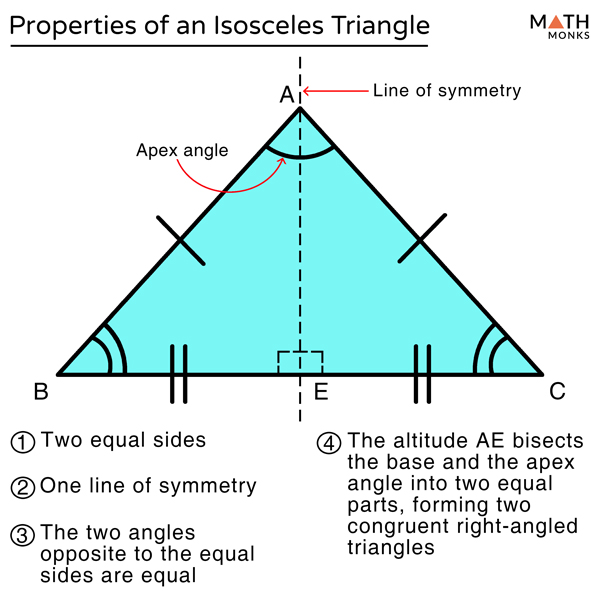


Also, ancient Babylonian and Egyptian mathematicians were of the know-how on the calculations required to find the ‘area’ much before the ancient Greek mathematicians started studying the isosceles triangle. The angles across from each equal side are also the same. We know that triangles are three-sided enclosed polygons and they are classified as equilateral, isosceles, and scalene, based on the length of their sides. In geometry, the word isosceles describes a triangle with two sides that are the exact same length.

By definition, an isosceles must have at least two congruent. The term isosceles triangle is derived from the Latin word ‘īsoscelēs’, and the ancient Greek word ‘ἰσοσκελής (isoskelḗs)’ which means “equal-legged”. Isosceles triangles are those triangles that have at least two sides of equal measure. An equilateral triangle can also be described as isosceles since it has all 3 congruent sides. The three sides of the triangle above are AB, BC and AC. The definition of an isosceles triangle has changed slightly over the years. An exterior angle of a triangle is formed by any side of a triangle and the extension of its adjacent side. An isosceles triangle is a triangle with two equal sides and one unequal side. These angles are also called the interior angles of a triangle. The angle formed at A can also be written as ∠BAC. The three angles are the angles made at these vertices, i.e. The Indo-European etymon is also conventionally compared with Latin scelus "misfortune resulting from the ill will of the gods, curse, wicked or accursed act, crime, villainy," a neuter s-stem that appears to match exactly Greek skélos, though if "crime" is secondarily developed from a sense "misfortune," with religious connotations, a connection with crookedness is less likely.In the above triangles, the three vertices are A, B and C. It can be drawn to have two equal sides and two equal angles or with two acute angles and one obtuse. Borrowed from Late Latin isoscelēs, borrowed from Greek isoskelḗs "having equal legs, (of a triangle) having two equal sides, (of numbers) divisible into equal parts, even," from iso- iso- + -skelēs, adjective derivative of skélos (neuter s-stem) "leg," going back to an Indo-European base *skel- "bent," whence also Armenian šeł "slanting, crooked" with o-grade, Greek skoliós "bent, crooked, askew, devious" perhaps with a velar extension Germanic *skelga-/*skelha-, whence Old English sceolh "oblique, wry," Old Frisian skilich "squinting," Old High German skelah "crooked, oblique," Old Icelandic skjalgr "wry, oblique" An isosceles triangle can be drawn in many different ways. Isosceles triangle: those triangles are called isosceles triangles which are formed when the two sides of a triangle are equal or congruent.


 0 kommentar(er)
0 kommentar(er)
